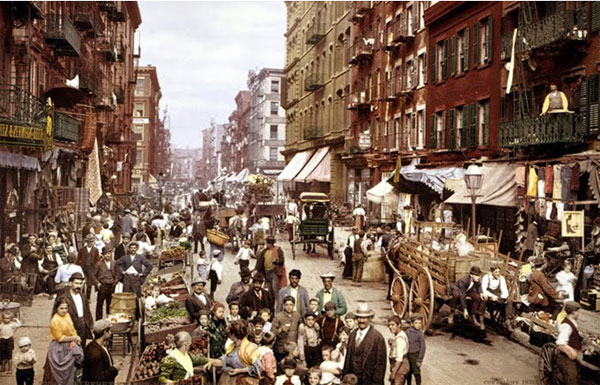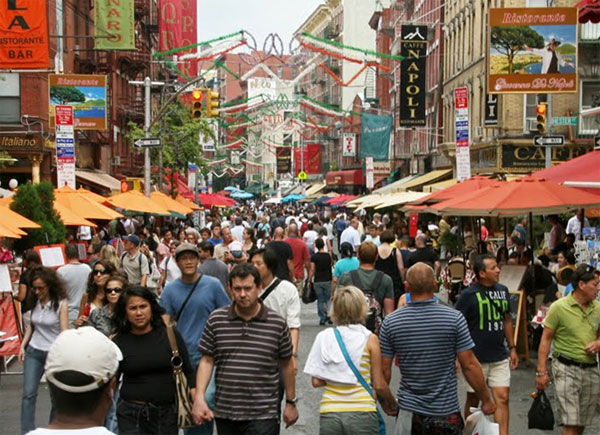
Source: Mulberry Street, "Little Italy" in New York City, Library of Congress
Now that you have met the immigrants, determined where they have come from, and why they left their homelands, it is time to see the effects of the European immigration on the United States.
Through your research, you have discovered that most European immigrants landed in major cities such as New York City, Chicago, Boston, and others. You will investigate some of these areas to see if spatial diffusion is evident in a specific location.
Activity
Examine both photos. The first photo is a historic photo of Mulberry Street in New York City (taken about 1900), which is also called "Little Italy" because it is the main street in the neighborhood where most Italian immigrants settled as they moved into the area. Take a look at the photo and compare it to the second photo of Mulberry Street today (taken in 2009).
In your notes:

Source: Mulberry Street, "Little Italy" in New York City, Library of Congress

Source: Mulberry Street, Brian Dube, New York Daily Photo